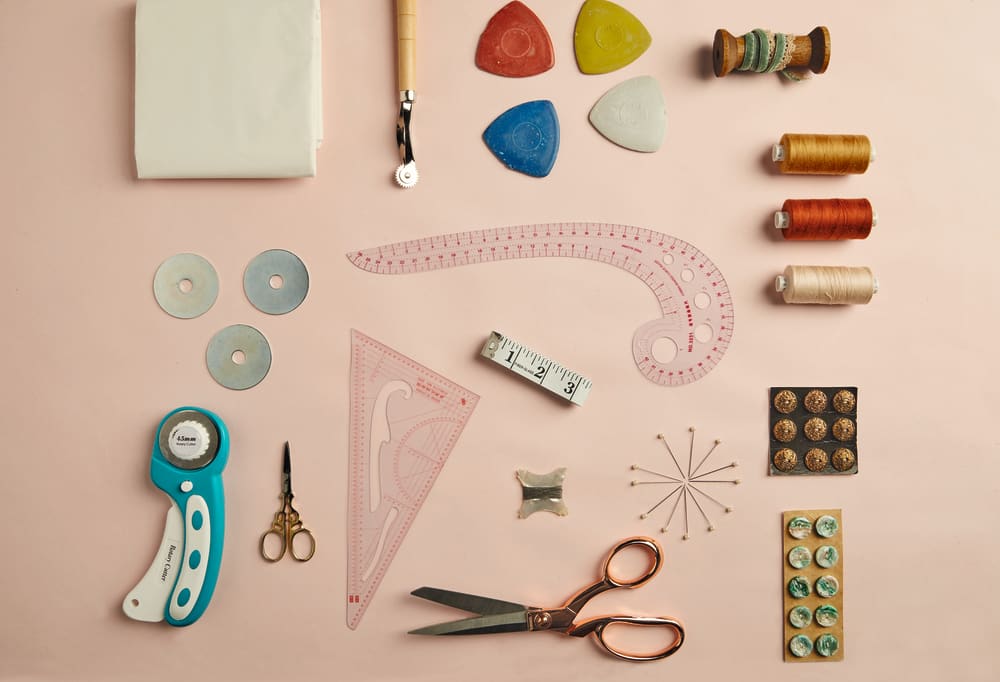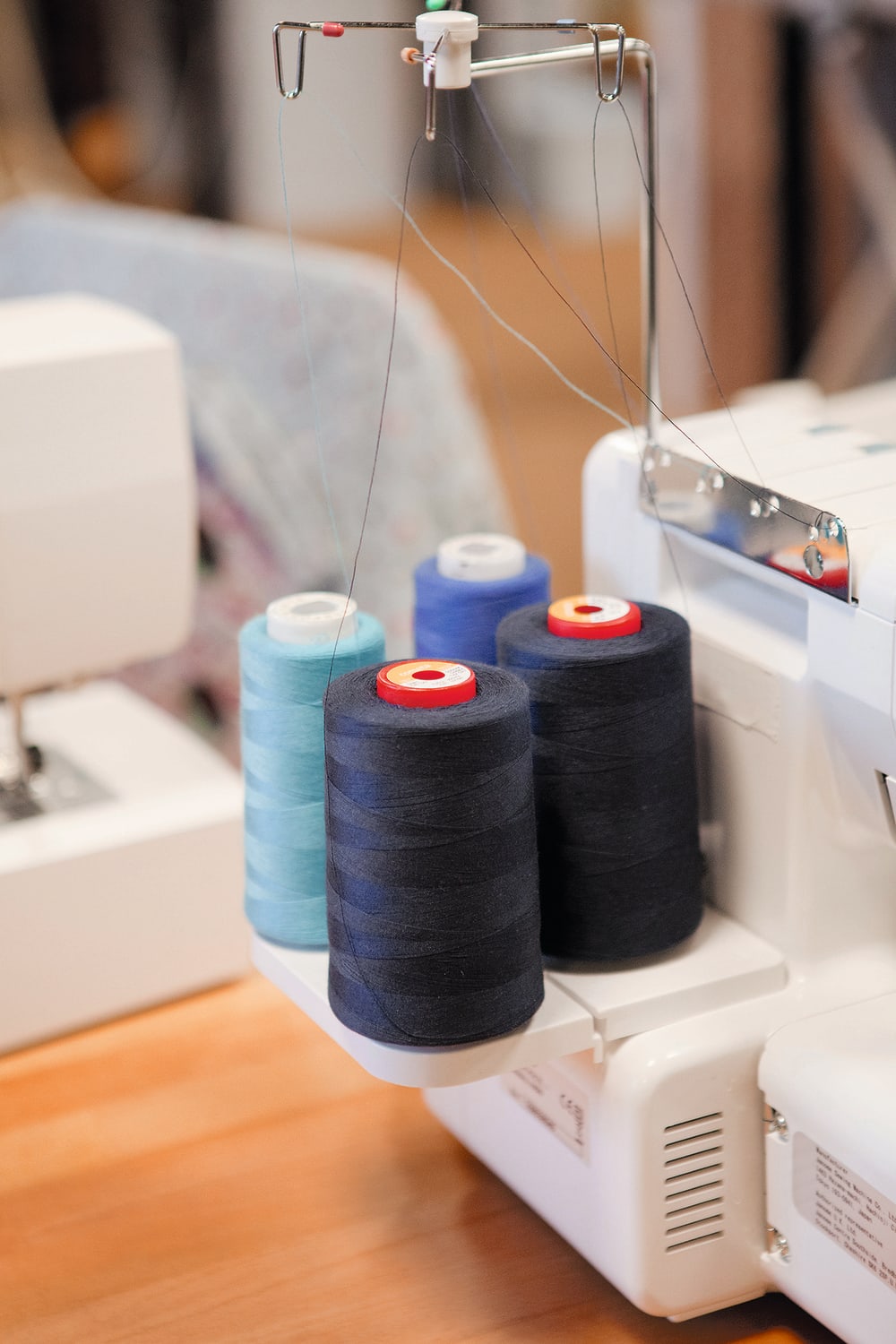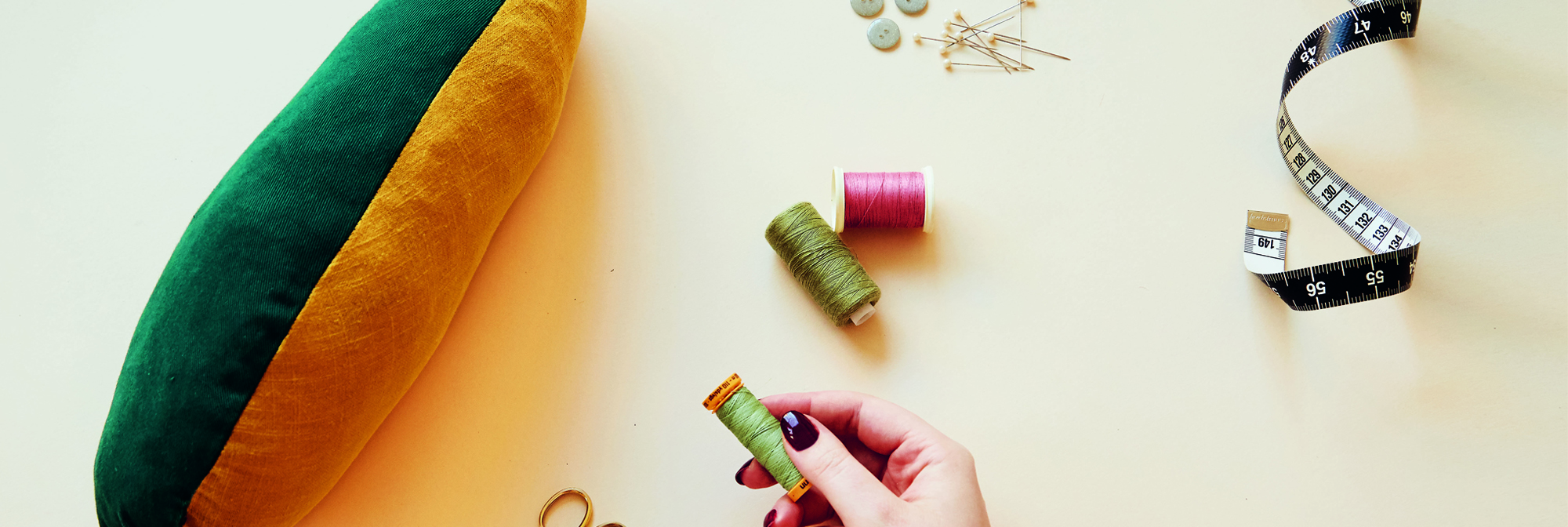Caroline Akselson, a Costume Technician at Wimbledon College of Arts, has co-written a book on Sustainable Style with fellow sewing expert Alexandra Bruce.
A companion to the BBC2 primetime series, The Great British Sewing Bee, and published by Quadrille, the book accompanies sewers at all levels on their creative journey to reduce, reuse and recycle – ultimately creating their own considered closet.
We caught up with Caroline, who is also a Wimbledon alumna, to mark the launch of the book.
Congratulations on your companion book to the BBC2 Great British Sewing Bee. How was it to work alongside the TV series?
Thank you so much! Writing a book has been a dream come true, and writing one on sewing and sustainability was even more of a dream. It was exciting and challenging to write a companion book, as there are so many more people involved than a stand-alone book. This book spans last year’s season and the new season airing this Spring, so there was also a lot of secrecy involved as we were writing when the new season was still in production. It was great to be able to collaborate with a team and to feel part of a team. The TV show is so popular, so it’s a very exciting idea that all those viewers will hear about this book!

BA (Hons) Costume for Theatre and Screen, Wimbledon College of Arts, UAL | Photograph: Brooke Harwood & Charlotte Medlicott courtesy of Quadrille
The book has the title Sustainable Style: How important is it for sewers to reduce, reuse and recycle as the foundation for their creative process?
Sewing is such a great opportunity to be more mindful of what and how you consume, because you are in control of many processes that a shopper wouldn’t be. I always encourage people to sew with the fabrics that they already have at home, rather than always buying new fabric that ends up on a pile. You can also reuse sheets and table cloths and things that have lost their original use. Being able to sew is such a great skill to be able to transform pieces of fabric into useful items. The goal is always to keep fabric out of the bin for as long as possible, so reusing materials for as long as you can is excellent. There are lots of projects in the book for this! Lastly, I think a lot of creativity springs from having to think around a problem: if you have to cut out a pattern from a limited amount of fabric, you find ways of being economical with your fabric in ways that you wouldn’t have to be if you had an unlimited amount of fabric.

BA (Hons) Costume for Theatre and Screen, Wimbledon College of Arts, UAL | Photograph: Brooke Harwood & Charlotte Medlicott courtesy of Quadrille
Can you give us a short overview of the book and who it’s for?
This book is very much for people who want to improve their sewing skills and already have basic skills. It therefore doesn’t cover things like threading a sewing machine, but it does cover how to hack a sleeve pattern into a new pattern, for example. It also has a whole chapter on sustainable sewing, which I am excited for people to read. The book is great if you don’t know where to start when it comes to making your sewing practise more sustainable and covers lots of topics in bitesized pieces so you can get stuck in and learn something new as you get sewing.
The book contains patterns from the two seasons of the TV show, original patterns that are exclusive to the book, short essays on different topics relating to sustainability in your wardrobe (like mending and laundry) and finally there are upcycling projects that are quick, fun and easy makes. The patterns are mostly for women, but we have a few men’s and unisex patterns too. There are no children’s patterns as we wanted to focus on dressmaking for yourself and not automatically make that link between sewing and kidswear.
Could you share an example of some of the eco-friendly trends or processes that can be found in the book?
I dyed one of the upcycling projects in the book in a natural dye bath (with help from a UAL colleague!) and we included the recipe so you can try it at home. It uses kitchen waste and no chemicals. There is also a short chapter on how to make your laundry habits a bit greener, including your dry cleaning, which might be a new topic for some readers. You will also find a checklist that can help you source more ethical or sustainable fabrics, which is something I think people struggle with. It seems like such a wide topic that many people don’t know where to start. In terms of the patterns, we encourage you to use the same pattern over and over again by making different versions, so we have included alternative cutting lines for many of them. This opens your mind to the possibilities of using and reusing what you have and getting creative with how you cut out your projects and how much fabric you use.

BA (Hons) Costume for Theatre and Screen, Wimbledon College of Arts, UAL | Photograph: Brooke Harwood & Charlotte Medlicott courtesy of Quadrille
Why is it important that we encourage people to sew and to create or design their own clothing?
As a maker you have much more control than a shopper: you can select the fabric, the thread and obviously you are the maker so you know the working conditions. This is all a huge advantage over the average fashion brand, where we have zero control over any of these things (except the decision not to buy from them). I also think making your own clothing makes you appreciate how much time goes into making clothes, so next time you do buy something you will hopefully choose more carefully. I believe people take better care of things they have made themselves and this results in items being worn for longer, which is the most sustainable thing you can do: wear your wardrobe for as long as possible. And finally, you can make the clothes fit you properly, leading to garments that boost your sense of accomplishment and eliminates having to fit into sizing systems that can be unhelpful to people’s sense of wellbeing or beauty.
At Wimbledon, how has sustainability been incorporated into the course and student projects?
We worked hard last year to get proper fabric recycling in place, which is the most important thing for a big course like ours. We also get lots of donated fabrics which we encourage students to use for toiles. One of my colleagues organised a panel talk on sustainability and costume and I know many of our current third-years are incorporating sustainability into their final projects or dissertations, which is so good to witness!

BA (Hons) Costume for Theatre and Screen, Wimbledon College of Arts, UAL | Photograph: Brooke Harwood & Charlotte Medlicott courtesy of Quadrille
Where and how do you see sustainability playing a role in costume design in the future?
I’m hoping the choice of fabrics will play a bigger role, as a large amount of fabrics is used in costume departments. That would make a very big difference, but is inevitably linked to cost. It would also be great if sustainability can become a part of the planning phase from day one, in the way it’s happening more and more in certain fashion labels. You can see sustainability as a design aspect: if you create something that is released into the world and it can’t be reused, repurposed or recycled, then that is inherently a design flaw.
A great start would be all the smaller items involved in costume making that seem to be plastic or single use - plastic hangers and single use dress bags - and all the fabric we use for toiles. It’s the things we use on a daily basis that have the power to create the biggest change.
Find out more about The Great British Sewing Bee: Sustainable Style by Caroline Akselson and Alexandra Bruce
Find out more about BA Costume for Theatre and Screen

